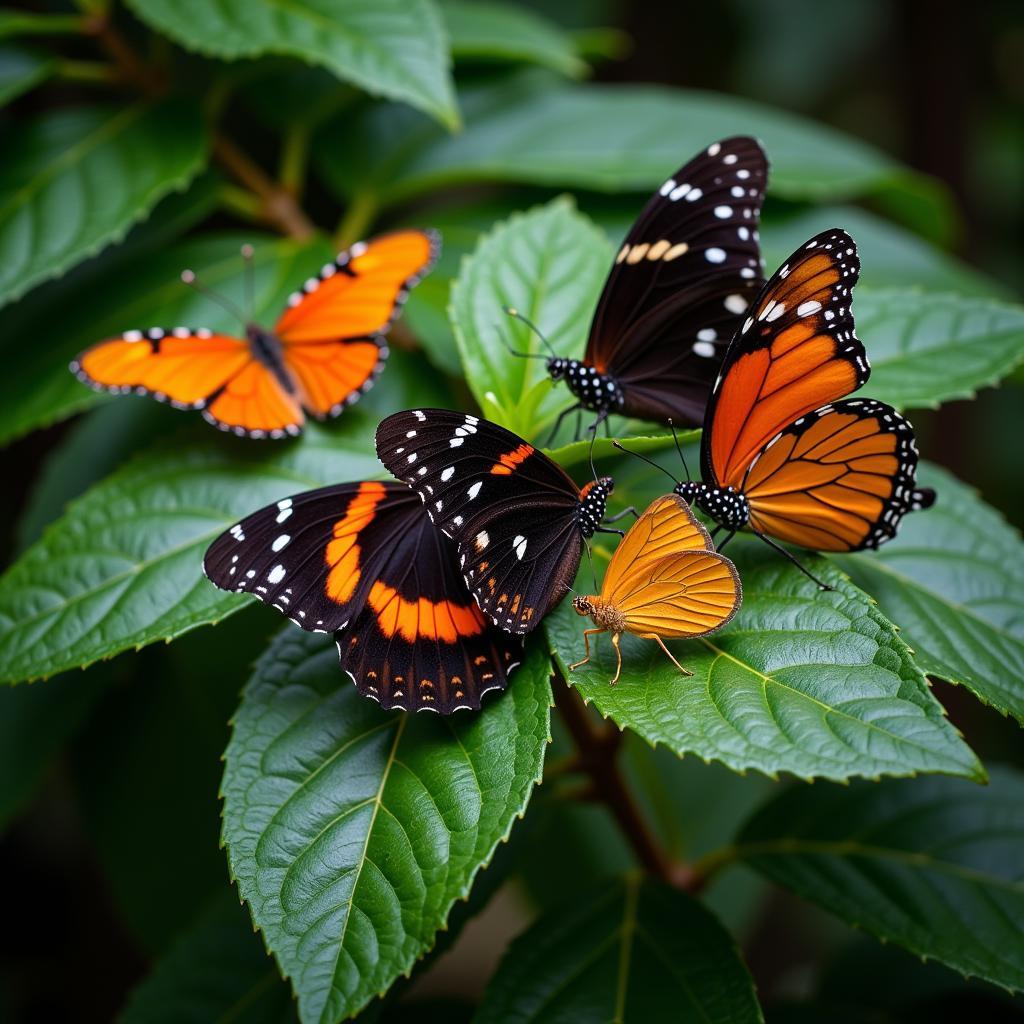Majestic African Desert Trees: Survival and Significance
The resilient African Desert Tree stands as a testament to nature’s adaptability. These remarkable trees not only survive but thrive in harsh, arid environments, playing a crucial role in the ecosystem and the lives of people who call the desert home. Let’s delve into the fascinating world of these iconic symbols of African resilience.
Adapting to Aridity: The Secrets of African Desert Trees
African desert trees have developed ingenious strategies to cope with the challenges of scarce water and extreme temperatures. Their deep root systems, often extending far below the surface, tap into underground water sources. Some species, like the baobab, store vast amounts of water in their thick, spongy trunks, allowing them to endure long periods of drought. Others, like the acacia, have small, waxy leaves that minimize water loss through transpiration. These adaptations are vital for survival in the unforgiving desert landscape. For instance, the spiny leaves of many acacia trees also deter herbivores, ensuring the tree’s continued existence.
After surviving years in the desert, some trees develop unique looks. You can enjoy them through African landscape photography.
Key Species: Icons of the African Desert
The African deserts are home to a diverse range of tree species, each with its unique characteristics and adaptations. The iconic baobab, with its massive trunk and sparse branches, is perhaps the most recognizable. The acacia, with its delicate foliage and thorny branches, is another common sight, providing shade and sustenance to both animals and humans. Other notable species include the desert date palm, the frankincense tree, and the myrrh tree, each contributing to the rich tapestry of life in these arid regions. These trees aren’t just beautiful; they are vital components of the desert ecosystem.
You can find more information on African flowers on Wikipedia.
The Importance of African Desert Trees: Beyond Survival
African desert trees are far more than just survivors; they are integral to the desert ecosystem and the lives of the people who live there. They provide shade, shelter, and food for a variety of animals, from insects to large mammals. Their roots help stabilize the soil, preventing erosion and desertification. For local communities, these trees are a source of food, medicine, fuel, and building materials. The fruit of the baobab, for instance, is rich in vitamins and minerals, while the acacia gum is used in traditional medicine. The cultural significance of these trees is also profound, often featuring in local folklore and traditions.
What are the most common African desert trees?
Some of the most common African desert trees include the baobab, acacia, desert date palm, frankincense tree, and myrrh tree.
How do African desert trees survive with so little water?
African desert trees have evolved various adaptations to conserve and access water, such as deep root systems, water storage in their trunks (like the baobab), and small, waxy leaves to reduce transpiration.
What is the cultural significance of African desert trees?
African desert trees often hold deep cultural significance, featuring prominently in local folklore, traditions, and even spiritual beliefs. They are often seen as symbols of resilience, strength, and life in the face of adversity.
Are African desert trees endangered?
Some species of African desert trees are indeed facing threats due to climate change, deforestation, and overgrazing. Conservation efforts are crucial to protect these vital components of the desert ecosystem.
Can African desert trees be grown in other climates?
Certain species of African desert trees can be cultivated in other arid or semi-arid regions, provided they receive adequate sunlight and well-drained soil. However, it’s essential to research the specific needs of each species before attempting to grow them outside their native habitat.
Conclusion: Appreciating the Majesty of African Desert Trees
African desert trees, with their remarkable adaptations and vital roles in the ecosystem, stand as powerful symbols of resilience and life. From the iconic baobab to the humble acacia, these trees are essential for the survival of both wildlife and human communities in these harsh environments. Understanding and appreciating their importance is crucial for their conservation and for the future of the African deserts. Explore more about African botany. Also, check out these amazing African landscape wallpapers.
FAQ
- What is the tallest African desert tree? The baobab can reach up to 25 meters.
- What is the lifespan of an African desert tree? Some baobabs can live for thousands of years.
- Are all African desert trees thorny? No, while many have thorns for protection, not all do.
- Do African desert trees produce flowers? Yes, many species produce flowers, often attracting pollinators like insects and birds.
- How do desert trees contribute to preventing desertification? Their roots help bind the soil, preventing erosion and the expansion of deserts.
- What are some uses of African desert tree products? They are used for food, medicine, fuel, building materials, and even making musical instruments.
- How can I support the conservation of African desert trees? You can support organizations working to protect these trees and their habitats.
You can also enjoy some African hot image collections.
Need help? Contact us 24/7: Phone: +255768904061, Email: kaka.mag@gmail.com, or visit us in Mbarali DC Mawindi, Kangaga, Tanzania.
